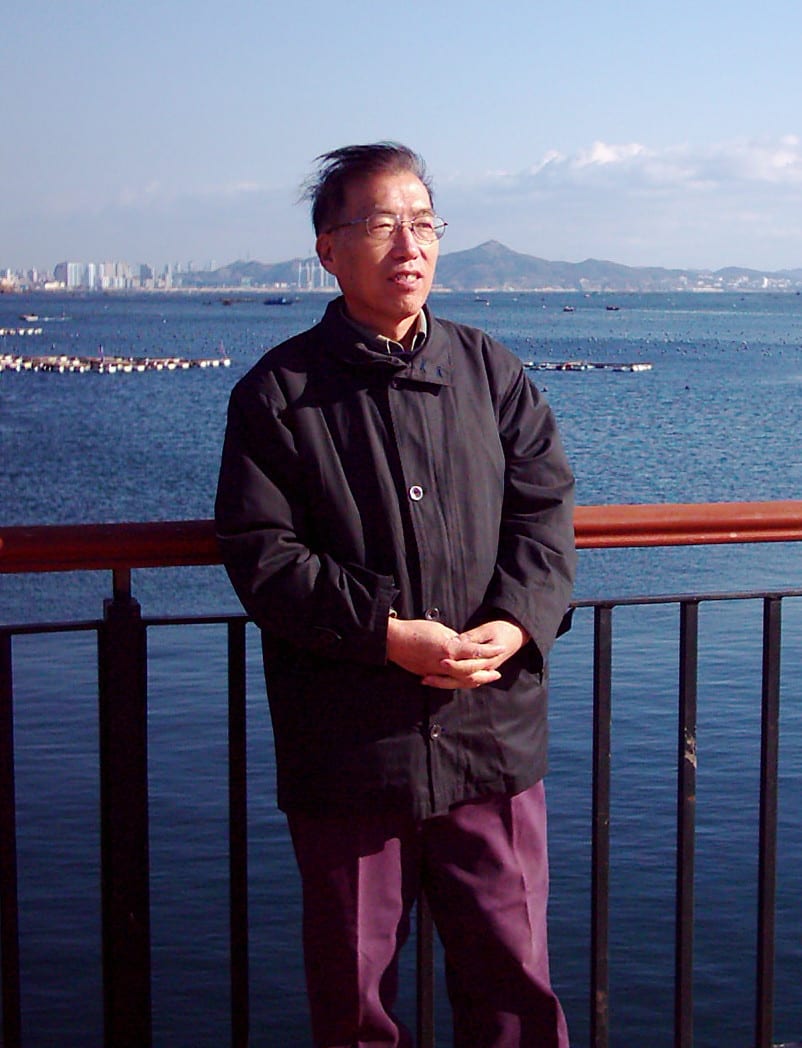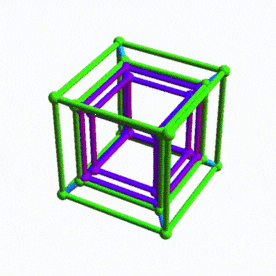
Passing Beyond Gravity: An Obituary for Hongya Liu (2008)
Gravitation lost a quiet hero with the recent death of Hongya Liu. He was born on 21 January 1946 in China, but after finishing college his schooling was interrupted by the Cultural Revolution, and he was obliged to work for a while fixing machines in a factory. However, he was fascinated by physics, and was finally able to study for his PhD at the Chinese Academy of Sciences. Following that, he did research on a variety of topics in Einstein theory and Kaluza-Klein theory at Zhengzhou University. The middle part of his career saw him produce a remarkable body of work on higher-dimensional gravity, primarily at the University of Missouri in Columbia and the University of Waterloo in Canada. The quantity and quality of this work meant that when he decided to return to China he was offered an influential position with a group of research students at Dalian University. Unfortunately, he was diagnosed with liver cancer, and his latter years were difficult. An organ transplant was followed by complications, and he died on 14 January 2008. At a critical time in hospital, he chose above others to talk with his graduate students about research, showing a rare dedication to the physics that had been his passion in life.
Hongya spent the years 1990-1998 in the United States and Canada. In 1988, Hongya wrote to Bahram Mashhoon and expressed interest in joining the department of physics and astronomy at the University of Missouri in Columbia as a visiting scholar. At the time, Hongya was an associate professor of physics at Zhengzhou University and had published a dozen highly interesting papers on a range of topics including gravitational radiation, cosmology and Kaluza-Klein theories. In particular, he had worked on gravitational waves for his Ph. D. thesis with Peiyuan Zhou. By a happy coincidence, Bahram had received a research grant for a project on gravitational waves from black holes, and was therefore eager to work with Hongya on the quasinormal modes of black holes. Hongya arrived in Columbia, Missouri, in September of 1990. The initial collaboration with Bahram was quite fruitful, and Hongya traveled to California to present their paper at the Seventh Pacific Coast Gravity Meeting (March 8-9, 1991). At about that time, Hongya’s wife and daughter joined him in Columbia. The family soon acclimated to the new environment and enjoyed the relative peace and quiet that this Midwestern college town afforded. (Their daughter, Lexi, excelled at the local school.) The other research project that mainly occupied Hongya in Columbia was Kaluza-Klein theory, in which he had been deeply interested for some time. Bahram was then working on Mach’s Principle, and recognized in noncompact Kaluza-Klein theory a possible connection. Mach had identified the main epistemological difficulty with Newtonian absolute space and time: the Newtonian point masses had been “placed” in space and time, but there was no organic connection between them. A possible resolution of the problem would involve a fifth dimension, to which the masses would be organically connected. Soon Paul Wesson, who had been working on this approach, was invited to Columbia for a physics colloquium, and Bahram became an active participant in the development of this new aspect of higher-dimensional gravity. Hongya and Bahram (sometimes with other researchers) collaborated on 10 papers from 1990 until 2000. In Columbia, Hongya was an ideal colleague with exemplary dedication to scientific research.
Canada must have seemed an inhospitable place to Hongya, when he arrived there in a snowstorm in January 1992. He had traveled from Columbia, Missouri to Waterloo, Ontario by bus, and was picked up at the depot by Paul Wesson. These two researchers were to spend several years working together on a variety of topics in higher-dimensional gravity. Hongya stayed a few days at Paul’s place, until more permanent accommodations were found; but from the beginning the conversation was principally about physics. Hongya was never heard to complain about the harsh Canadian winters, or the fact he had left his wife and daughter in Columbia. His thoughts were nearly always on his research, and he disdained anything which represented a distraction from this. (His personal possessions fit into one case, he traveled everywhere by bus, and he was reluctant to eat in restaurants.) However, he was a friendly fellow, content with his lot as a journeyman physicist. The only time Paul saw Hongya chagrined was about a referee’s report. This concerned a paper in which Hongya had derived a rather intricate four-dimensional solution to Einstein’s equations of general relativity from the five-dimensional Ricci equations of Kaluza-Klein theory. The referee – whose identity was nearly obvious from his comments – was unable to see how a Ricci-curved 4D solution could be connected to a Ricci-flat 5D one. Paul pointed out that the referee, for all his eminence, had probably not heard of Campbell’s embedding theorem. Hongya was surprised that a well-known researcher could be ignorant of such a result, but then allowed himself a small smile of self-satisfaction: he was pleased to know that he was working at the forefront of his subject. Later, Paul and Hongya developed a smooth working relationship, in which they seldom discussed things by mouth but exchanged pages of algebra, which covered everything from an idea expressed as an equation to a full-fledged solution. This mode of research was highly efficient, even if it did little to help Hongya’s halting English. The latter problem meant that Hongya was unable to lecture in the Physics Department at Waterloo. But due to the support of the associate chairman, who also bore the name Liu, remunerative work of other kinds was found when Paul’s grant ran out, enabling a longer stay. During their collaboration, Hongya and Paul (sometimes with other researchers) wrote 30 papers together. Most of these were on what was initially called induced-matter theory, but is now usually known as space-time-matter theory. This consists basically of solving the apparently empty 5D Ricci-flat equations, and interpreting the result as a solution of the 4D Einstein equations with matter. Such a procedure is guaranteed by Campbell’s theorem, and allows us to realize Einstein’s dream of explaining matter in terms of pure geometry. The elegance and technical power of this approach to higher-dimensional gravity meant that it experienced an explosion of interest in the 1990s. An informal group was formed to focus the work, called the Space-Time-Matter Consortium. This group has now grown to a hefty size, and its principal results are archived on a website which is available for all to peruse (www.5dstm.org). Hongya Liu was a founding member of the STM group.
During Hongya’s stay in North America, he met several other researchers who were working on STM theory. Chief among these were James Overduin and Jaime Ponce de Leon, who both spent time with Paul Wesson in Waterloo.
James remembers Hongya as a person whose life was devoted to unlocking nature’s secrets, and who had an unusual capacity for sheer hard work. James and Hongya worked together most closely from 1998 – 2000, and produced a comprehensive review of solar-system tests of higher-dimensional gravity. Hongya was quiet, reliable and extremely fast at doing calculations. The same diligence which marked his scientific work also carried over to his private life. James once invited Hongya and his wife (who was visiting from Columbia) to his parents’ house for dinner. As soon as the guests entered the door, they unpacked a box of pots, pans and ingredients, and proceeded to prepare a meal centered on Chinese dumplings. They had anticipated that the Overduin household might not have the right equipment, and came prepared. James and Hongya continued to correspond regularly about scientific matters in the years that followed, especially on the topics of higher dimensions and dark matter, two subjects that Hongya hoped to combine. It is characteristic of Hongya that he kept his final illness to himself. Hongya’s last email to James, written on December 30, 2007, concluded with the optimistic note: “This result could be used to compare with observation!”
Jaime Ponce de Leon was another of Hongya’s colleagues for whom the death was unexpected and troubling. Jaime had come to Waterloo, originally from South America, to work with Paul Wesson on higher-dimensional gravity. It was a positive thing that Hongya was able to provide input and opinion. But while Jaime’s command of English was excellent, Hongya’s was less so (as already noted). They were also different in social outlook. One cold, dark evening in Waterloo, Jaime and Paul were walking towards a restaurant near the University for dinner. They met Hongya and invited him along. But he declined, explaining that he was returning to his office to work. Despite their differences, however, the two researchers had great respect for each other’s abilities. Jaime remembers Hongya as a soldier in the cause of physics.
Hongya Liu was an exceptional researcher in gravitation. His dedication to the subject was total. His friends and colleagues mourn his loss, not only for personal reasons but for the hole it has left in the subject.
Bahram Mashhoon (University of Missouri at Columbia)
James M. Overduin (Gravity Probe B, Stanford University)
Jaime Ponce de Leon (University of Puerto Rico)
Paul S. Wesson (University of Waterloo, Canada)
